Today in Maritime History: Sinking of MV Wilhelm Gustloff
MV Wilhelm Gustloff was launched in 1937 as a German passenger vessel. Initially used for cruises in the Baltic, it was briefly converted to a hospital ship at the start of World War II and then used as a barracks ship in German-occupied Gdynia. With the Russian assault in early 1945, the ship was designated to evacuate troops, auxiliaries, and civilians back to Germany. It departed Gdynia early on the morning of 30 January 1945 with an estimated 10,000 persons onboard, including 5,000 children. Fearing a collision with a supposed Germany naval convoy that night, the master activated the ship’s navigation lights. The lights were observed by a Russian submarine, which fired three torpedoes. All hit their mark and the ship sank quickly, with only a few hundred survivors.
The EPA's Clean Water Act and Understanding VGP
The Vessel General Permit (VGP) falls under the National Pollutant Discharge Elimination System (NPDES) of the Federal Water Pollution Control Act (FWPCA), better known as the Clean Water Act. It is administered by the US Environmental Protection Agency (EPA), an agency not well known or understood by the maritime industry.For years, the EPA had adopted a policy of broadly exempting discharges into the water that were incidental to normal operation of vessels. That changed after environmental advocacy groups prevailed in a judicial challenge. The first iteration of the VGP entered into effect in 2008 and remained in effect until replaced by the current iteration in 2013.
Serious Questions Surround BWMS Testing
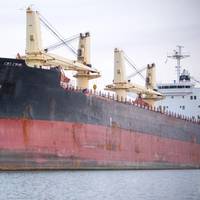
Serious questions have been raised regarding the testing of ballast water management systems (BWMSs). In order for a BWMS manufacturer to sell its equipment for use on commercial vessels operating in U.S. waters, the equipment must be tested in accordance with U.S. Coast Guard and Environmental Protection Agency (EPA) requirements and the equipment must then obtain a type approval certificate from the Coast Guard. To date, type approval certificates have been issued to six manufacturers and others are in the pipeline.
El Faro and Perceived Deficiencies in the ACP
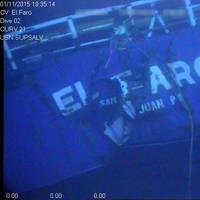
The October 1, 2015 loss of the U.S. cargo vessel El Faro along with its 33 member crew led to the convening of a Coast Guard Marine Board of Investigation charged with determining as closely as possible the cause(s) of the casualty; whether there is evidence that any failure of material was involved; whether there is evidence of misconduct, inattention to duty, negligence, or willful violation of law; and whether there is evidence that government personnel contributed to the casualty. The Marine Board released its report on October 1, 2017, the second anniversary of the casualty.
US Navy: Back to Basics
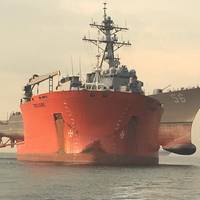
The U.S. Navy has a well-deserved reputation for seamanship in trying conditions. Recently though, the Navy has suffered a series of marine casualties, including the fatal collisions involving two destroyers of the Pacific Fleet. On June 17, USS Fitzgerald (DDG-62), an Arleigh Burke-class destroyer, was involved in a collision with the container ship ACX Crystal off Japan, resulting in the deaths of seven Navy crewmembers. The destroyer was severely damaged and is being returned to the United States via heavy-lift vessel for extensive repairs. On August 21, USS John S.
Salvage and Marine Firefighting
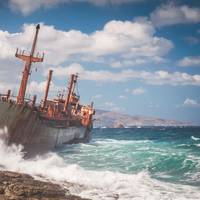
Salvage and marine firefighting are complex response efforts often undertaken in adverse weather and sea conditions. While no two oil spill responses are the same, the diversity of variation between any two oil spill responses is not near as great as the diversity of any two salvage and marine firefighting responses. As a result, salvage and marine firefighting response providers must plan for and anticipate a wide range of variation in what will be required to address their portion of a marine casualty. The U.S.
Melting Sea Ice: A Canary in the Coal Mine
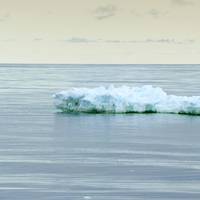
The rapid loss of Arctic sea ice is a sentinel. Most of us will never venture into the Arctic, but it can and does provide us with a forewarning of impacts coming to our parts of the Earth – and some of the most significant impacts will directly affect the maritime industry. In earlier times, coal miners were sometimes overcome by the buildup of odorless carbon monoxide gas. Some died as a consequence. Eventually it was realized that canaries were more susceptible to the gas than were humans.
Biofouling Keep Out!
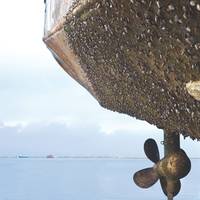
Biofouling was a backburner issue until 5 March 2017. On that day the Government of New Zealand ordered the bulk carrier DL MARIGOLD out of NZ waters after the vessel’s hull was determined to be excessively fouled with potentially invasive organisms including barnacles and tube worms. The bulker was not allowed back until it showed that the underwater surfaces had been thoroughly cleaned. This was the first known instance of a vessel expulsion due to biofouling. It was also significant…
Lines in the Water
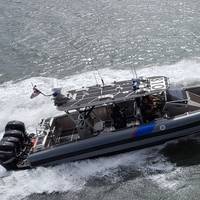
There are a variety of jurisdictional lines in the water. The first line to be considered is the national boundary between two adjacent or nearby countries. Adjacent countries tend to draw agreed boundaries extending their shoreside boundaries, with accommodations for headlands, capes, etc. Most national boundaries have been agreed upon long ago. A few, though, are not officially resolved. Somewhat surprisingly, of the four marine boundaries between Canada and the U.S., three are still in dispute.
Cabotage Rules Changes Proposed

On January 18, 2017, the U.S. Customs and Border Protection (CBP) proposed in its Customs Bulletin & Decisions newsletter a significant change to the U.S. cabotage rules. For many years, use of non-coastwise-qualified vessels in the transportation of pipeline repair material; anodes; pipeline connectors; wellhead equipment, valves and valve guards; damaged pipeline; platform repair material; and similar items from a U.S. point to another point within U.S. waters and/or those on the outer continental shelf has been ruled by CBP (and its predecessor U.S. Customs Service) as consistent with U.S.
Coral Reefs: A Unique Natural Resource
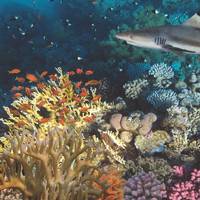
Stony corals are marine invertebrates with somewhat unique life cycles. For the most part, they reproduce sexually, broadcasting gametes into the water. Often, an entire coral colony or reef will spawn on the same night. Coral may also reproduce asexually by producing genetically identical polyps. Fertilized gametes drift in the current until, hopefully, they alight on a hard surface like a rock suitable for attachment. The gamete then develops into a polyp, producing a basal plate that affixes itself to the hard surface.
Salvage and Marine Firefighting Verification
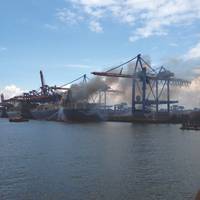
The U.S. Coast Guard regulations regarding salvage and marine firefighting (SMFF) as elements of vessel response plans (VRPs) for tank vessels have been in place since December 31, 2008. On September 30, 2013, these regulations were expanded to include non-tank vessels with a capacity of 2,500 barrels or greater of fuel oil. The VRP requirement was established by the Oil Pollution Act of 1990 (OPA 90). be resubmitted for approval of each significant change. The salvage and marine…
America Needs Icebreakers
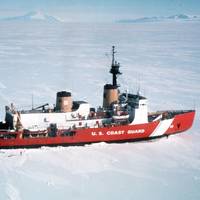
Russia has more polar icebreakers than the rest of the world combined. America has one polar icebreaker and that one is well past its prime. There has been talk of sharing icebreakers. Sharing may work with allies, who are generally on the same page. Sharing will not work with Russia, which views the world as a zero-sum game. In June 2016, Russia announced the launching of Arktika, the world’s largest polar icebreaker. With a full load displacement of 33,540 tons, a length of 173.3 meters and a breadth of 34 meters, it will be capable of breaking ice up to 2.9 meters.
Ballast Water Management Systems: Let the Games Begin

With the accession by Finland to the International Convention for the Control and Management of Ships’ Ballast Water and Sediments, 2004 (better known as the Ballast Water Management or BWM Convention), there are now sufficient ratifications for the Convention to enter into force. Entry into force will occur on 8 September 2017. It has been an agonizingly slow process for a convention that was adopted with such high hopes. Starting in the late 1970s as vessels became larger and faster…
Silence Your Ships
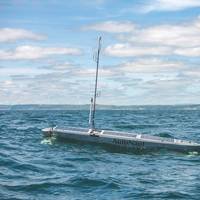
Anthropogenic (manmade) sound is creating havoc among marine mammals and other aquatic species. These creatures have very sensitive hearing, which they rely on to find food and mates and (for some) to communicate and navigate. Sound waves can travel much further and with much less loss of strength in water than in air. In pre-industrial times, the oceans were relatively quiet. Sailing ships generated almost no subsurface noise. A whale’s call could be heard by another whale hundreds of miles away in ambient conditions.
Artificial Stupidity
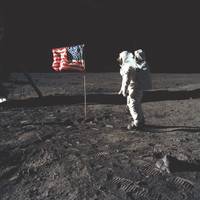
There is increasing speculation regarding when the first unmanned cargo ship will set sail. The more important question is when will the first unmanned cargo ship spectacularly fail? We (not me personally, but humans as a group) have utilized artificial intelligence to launch unmanned craft into space on increasingly long and complex voyages. Mostly, these space missions succeed and provide us with wonderful images and reams of important data. Therefore, it is theoretically and practically possible to construct and operate an unmanned cargo ship.
Subchapter M: Slow Walking the Inspection of Towing Vessels
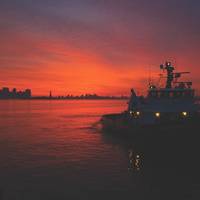
On June 20, 2016, the U.S. Coast Guard promulgated its long awaited or dreaded (depending on your perspective) final rule regarding inspection of towing vessels. The new regulations, which will enter into effect on July 20, derive from a 2004 legislative amendment which added towing vessels to the list of ‘vessels subject to inspection’. That statute also authorized regulations to establish a safety management system for towing vessels and maximum hours of service and related provisions for individuals engaged on towing vessels.
Automated Skill Erosion
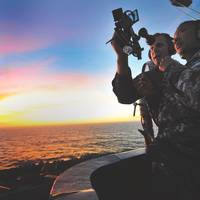
The increasing automation of vessels is causing some mariners to lose basic maritime skills. During dinner on June 10, 1995, the last night before the cruise ship Royal Majesty was due to arrive in Boston from its voyage to Bermuda, the master bragged to the passengers at his table that his ship could never run aground because it had all the latest electronic equipment, including a navigation system that integrated the GPS signals and other information. At 2225 that night the ship grounded on the Rose and Crown Shoal near Nantucket. It was 17 miles west of its planned trackline.
Arctic Coast Guard Forum: Eyes and Ears Up North
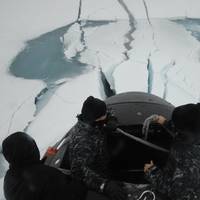
On October 30, 2015, at the U.S. Coast Guard Academy in New London, Connecticut, the heads of eight agencies fulfilling the functions of Coast Guard of Canada, Denmark, Finland, Iceland, Norway, the Russian Federation, Sweden, and the United States signed a Joint Statement formally establishing the Arctic Coast Guard Forum (ACGF). The ACGF is an independent, informal, operationally-driven organization. It is not bound by treaty, but will work in cooperation with the Arctic Council to foster safe, secure, and environmentally responsible maritime activity in the Arctic region.
The Latest on Ballast Water Mismanagement

On October 5, 2015, the United States Court of Appeals for the Second Circuit issued a 65-page decision holding that, for the most part, the 2013 Vessel General Permit (VGP) promulgated by the Environmental Protection Agency (EPA), was arbitrary, capricious and not in accordance with the law. The court declined, though, to vacate the VGP, but allowed it to remain in effect until the EPA issues a new VGP. The 2013 VGP had adopted, almost completely, the standards established in the International Convention for the Control and Management of Ships’ Ballast Water and Sediments…
North Pole: The Latest Tourist Trap

On August 16, 2015, the geographic North Pole was visited by a Russian surface ship for the one-hundredth time. The Russian nuclear icebreaker 50 Let Pobedy (50 Years of Victory) carried 106 tourists from 16 different countries. This was the icebreaker’s seventh cruise to the Pole just this season. Each voyage takes just less than two weeks round trip, and that includes a full day of partying at the top of the world. This is all available for a starting cost of $26,995 per person for a basic two-person cabin with a standard twin bed…
Sleep Apnea

On June 23, 1995, the cruise ship Star Princess, carrying 1,568 passengers and 639 crew, grounded on charted and marked Poundstone Rock in the Lynn Canal of Alaska. Although there were no deaths or injuries, the ship’s bottom was ripped open. Repairs cost $21.16 million. The National Transportation Safety Board (NTSB) determined that the probable cause was the pilot’s poor performance, which may have been exacerbated by chronic fatigue caused by sleep apnea. Among other things, the NTSB recommended that the U.S.
The Lowdown on Ocean Acidification
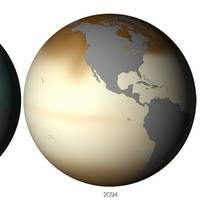
Scientists say that the world’s oceans are acidifying. This term is correct, but somewhat misleading. Until recently, the oceans have had (so far as can be determined) a pH level of about 8.4 for millennia. A pH of 7.0 is neutral. Thus, the oceans are alkaline, not acidific. But, since the beginning of the industrial age when emissions of carbon dioxide started to rise, the oceans’ pH level has dropped to 8.3 and the waters have become less alkaline. Some argue that that is not a big change in 200 years. But it is the largest change known to have occurred in 20 million years.






